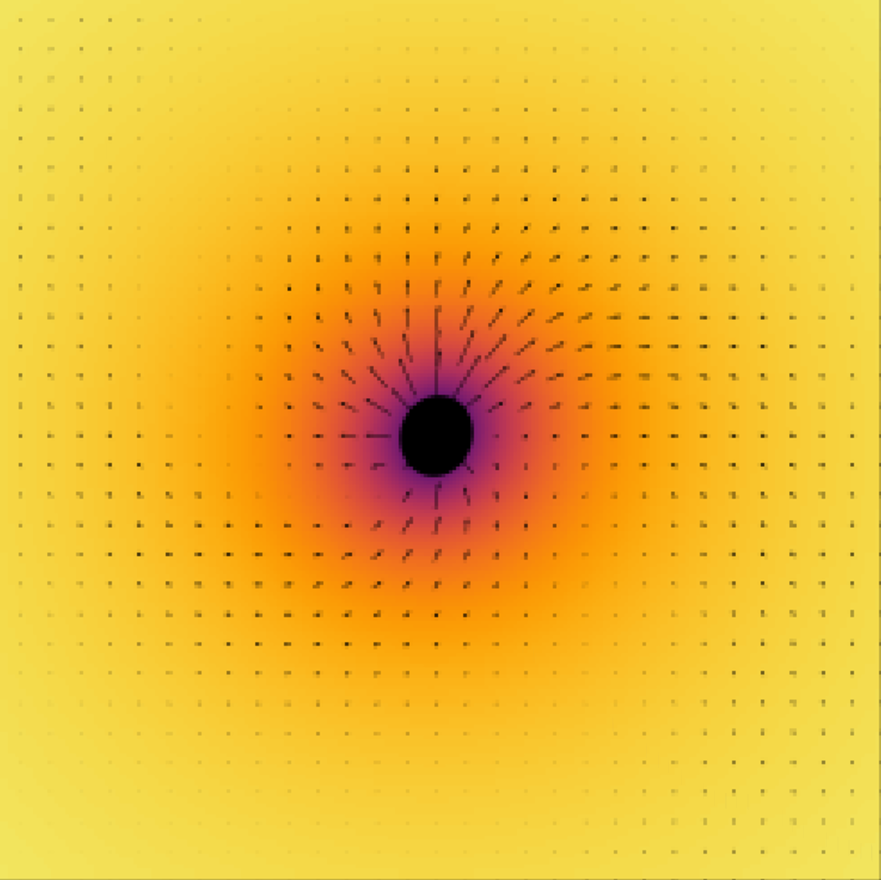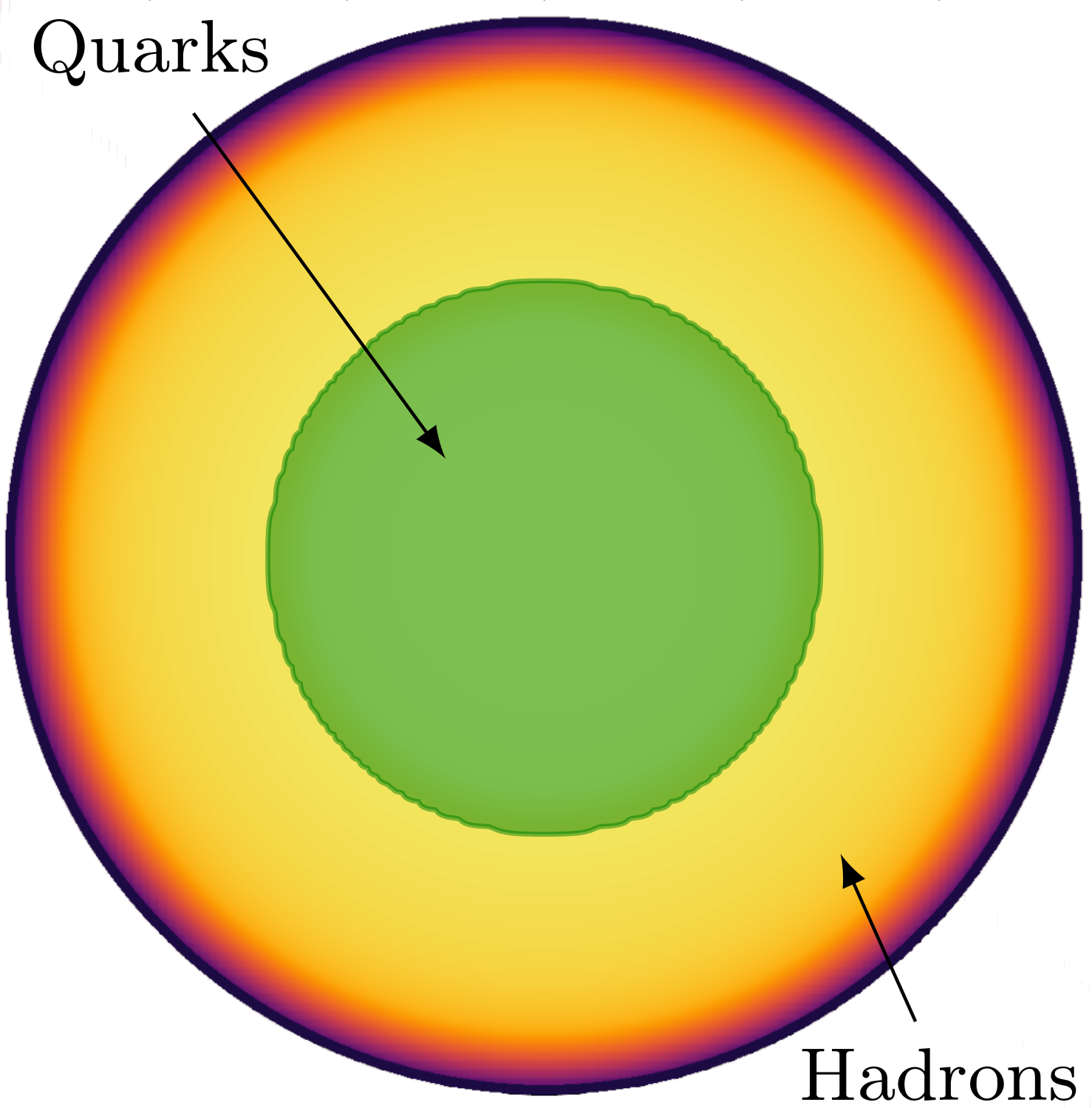The intended audience of this page are specialists (i.e., physicists, astronomers, …). You can find the version for the general public here.
Numerical relativity and gravitational wave astronomy
Broadly speaking, my research focuses on strongly gravitating systems, such as black holes and neutron stars. I develop and use computational methods and codes to tackle problems in strong gravity and I primarily work in numerical relativity, field that is concerned with finding numerical solutions to the equations of general relativity. I am deeply interested in using simulations to push our physical theories to their limits and learn more about fundamental physics. One of the main ways I am doing this is by using gravitational waves to interface with observations and experiments. Gravitational waves (detected for the first time in 2015) offer a completely new way to study the universe and are providing invaluable data to address long standing questions.
Charged black holes

Einstein-Maxwell’s theory is the most fundamental description of
electromagnetism and gravity, and several far-reaching results on black holes
were found in this context (e.g., the no-hair theorem). Since
astrophysically-relevant black holes are believed to have negligible electric
charge, the theory has been mostly confined within the realm of theoretical
investigation. Consequently, interacting charged black holes represent a largely
unexplored territory. I apply numerical-relativity techniques to perform
simulations of such systems. I mostly focus on systems with two black holes with
extreme non-linear interaction. One main target of this investigation is
quasi-circular inspirals of black holes, which are possible sources for current
and future gravitational-wave detectors. I developed the formalism and codes to
perform long-term and stable simulations of these charged binary black holes.
Among the most important new components, I
built
TwoChargedPunctures, and QuasiLocalMeasuresEM, which provide a quasi-local
description of horizons in numerical relativity. Using Einstein Toolkit and the
canuda codes, I performed the first
general-relativistic simulations of quasi-circular inspirals of charged black
holes from constraint-satisfying initial
data.
From these calculations, I extracted gravitational waves and placed the first
constraints on black-hole charge with LIGO/Virgo data.
I believe that charged black holes are a perfect laboratory where to learn about the interplay between extreme gravitational and electromagnetic fields, the understanding of which could be relevant also for other astrophysical applications. For instance, I showed that charge does not matter in ultrarelativistic collisions of black holes, result that has implications for the formation of microscopic black holes in particle accelerators and that continues in a new existing direction a line of research that started a decade ago. Moreover, the mathematical framework used to describe charged black holes can be employed for a large variety of different physical systems, such as modified theories of gravity.
Rotating, relativistic stars

The study of neutron stars brings together several different fields ranging from astrophysics and gravitation to particle and nuclear physics. My research focuses on rotating neutron stars, the properties of which are significantly different compared to the static case. I studied stability properties of differentially rotating compact stars and found new universal relations.
Astronomical observations of compact stars are an interesting avenue to constrain the equation of state of dense nuclear matter. I am particularly interested in equations of state with a phase transition, from hadronic matter to quarks, which give rise to hybrid stars. I studied rotating hybrid stars and found that some universal relations do not hold anymore.
I am generally interested in dynamical-spacetime general-relativistic
magnetohydrodynamic simulations (GRMHD), and I contributed to extend
IllinoisGRMHD to support finite temperature, realistic equations of states.
Accretion onto binary black holes

The future is going to be exciting. In the late 2030s, the Laser Interferometer Space Antenna (LISA) will detect for the first time gravitational waves from mergers of supermassive black holes. Most galaxies harbor such black holes at their centers, so mergers of supermassive black holes will likely have electromagnetic afterglows that are due to the hot plasma inspiraling towards the horizons. We are also building new powerful telescopes that will be able to detect such transients. Coincident detection of gravitational and electromagnetic waves from supermassive black holes (“multimessenger”) will enable leaps in several areas of astronomy, cosmology, and fundamental physics. Currently, our theoretical model for the electromagnetic signals near merger are not refined enough, and we will not be able to extract physical quantities from future observations. To advance our models, I am developing a full general relativistic ray tracing and radiation transfer code to find accurate observational signatures for systems near merger.
High-performance computing and software development
Numerical relativity and gravitational-wave astronomy are fields driven by data and computation, hence software plays an important part of my life. General-relativistic simulations are computationally demanding, routinely requiring weeks or months to be completed. For this reason, I have deep interest and solid expertise in high-performance and parallel computing. In my day-to-day life, I develop codes that run on thousands of processors on the most powerful supercomputers in US and Europe. To be honest, this interest is only a small subset of my broader and long-standing passion for programming and computer science. I strongly believe in open-source software, and I develop software to serve the community, making sure that my projects are well documented and accessible. You can find a list of software I develop or maintain in the Software page.